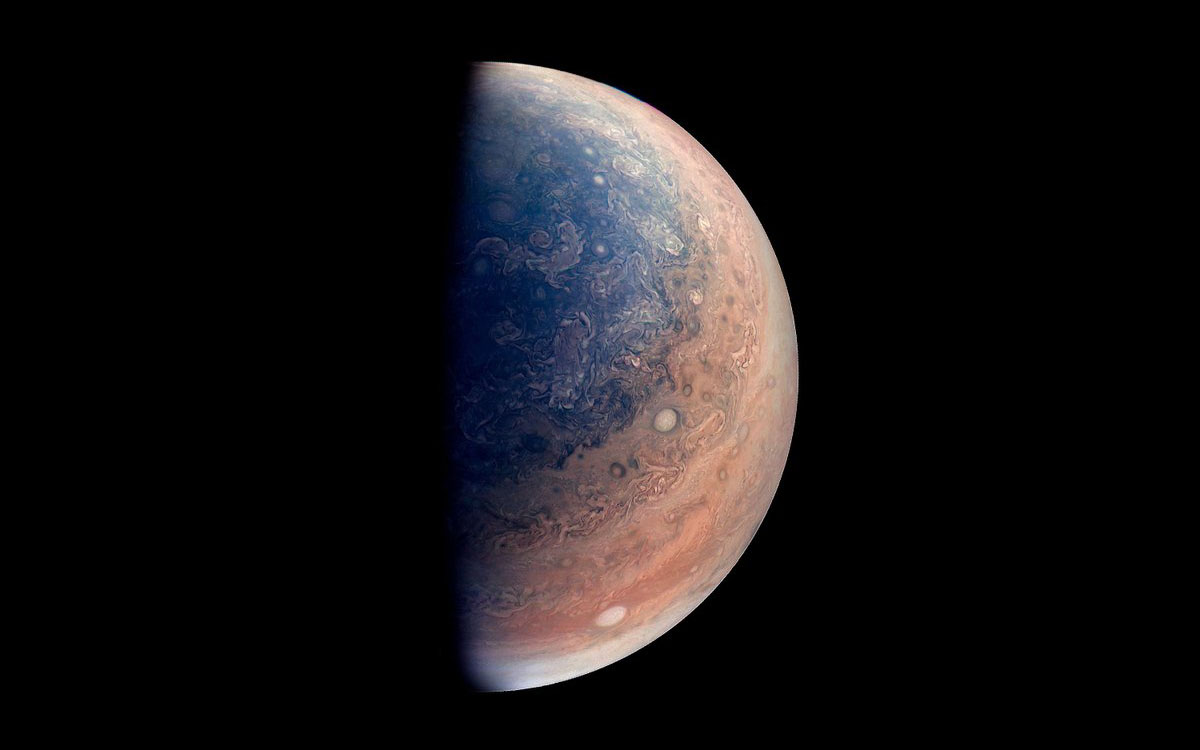how jupiter may have moved it, moved it from the outer reaches of the solar system

Jupiter, the impressionist painting of storm clouds manifested into a world, is a bit of on oddity. Sure, it has some amazing moons, one of which could possibly host life, it’s two and a half times heavier than every other planet in the solar system combined, its most prominent feature is a massive, red storm bigger than Earth and hundreds of miles deep, and its magnetic field traps enough radiation to quite literally melt your face off, all of which is interesting to put it mildly. But one of the weirdest things about it is its distance to the Sun. Based on what we know about planetary formation, it shouldn’t have been able to become as large as it is in its current orbit because the solar winds would’ve blasted away much of its atmosphere, and without a highly eccentric orbit, it couldn’t have retreated to gain back at least some of its mass.
So how did Jupiter become the solar system’s 800 pound gorilla? It did what so many other gas giants do after they form. It migrated closer to its parent star. And because it appears to have done so in an orderly fashion, it ended up in a stable orbit that was close, but no so close that it would be in danger of spiraling into the Sun’s gravitational well and get blasted by solar winds until a superheated core was all that was left. Jupiter should have been born in the outer solar system where the Sun’s influence is significantly weakened, starting off as a large rocky body and left to accrete mass for several million years in peace, some 1.2 billion miles away from its current position. After an impressive growth spurt, the would-be gas giant would have set out on its inward journey which lasted for roughly 700,000 years, gorging on gas along the way.
Of course Jupiter hardly made a conscious decision to move. Its migration was more than likely the result of plowing through the protoplanetary disc and losing momentum, forcing its original orbit to decay. This is what we think happens to Hot Jupiters, its similarly massive cousins that end up falling into their parent stars or in orbits measured in mere days. And we’re pretty sure we know this happened to Jupiter based on the asteroids along its current orbit. Two large clumps of them travel in front and behind the gas giant, but the group in front is significantly larger, with close to 50% more debris. According to recent astronomical simulations, the only way that could happen is if Jupiter spiraled inwards after its formation, picking up asteroids in its forward gravitational wake.
If this is indeed what happened, these asteroids — clustered at certain gravitational nodes where the gravity locks them into place known as Lagrangian points and called Trojans because many of them were named after Greek warriors — can provide us with an insight into the composition of Jupiter’s core because they should be made of similar rocks as the initial planetoid that would become the gas giant. Knowing what they’re made of would allow us to more calculate what would happen to them under immense pressure and simulate the end result, which we can try to match up to outward phenomena we see in the Jovian atmosphere and magnetosphere. So, not only does the idea of a Jupiter migrating inward align better with what we know about solar system formation from watching alien stars and solve a vexing mystery, it might also give us more insight into the giant world itself.
See: Pirani, S., (2019) The consequences of planetary migration on the minor bodies of the early Solar System, Astronomy & Astrophysics, Vol. 623, DOI: 10.1051/0004-6361/201833713





